Pots for Container Gardening
Pick your Pot
If you love container gardening, you’ll already know that not all pots are equal. Some are so heavy they need to be spotted into their location and are left there forever. Others are so light, they can blow away with the wind if they dry out. Still others are beautiful but too delicate to withstand local winters. Some look great but are basically impractical because they’re too small or don’t have drainage holes. In addition to all shapes and sizes, there is the material the pot is made of to consider. What should you use where? And why? Here are a few examples with the best advice we can find to go with them.
Classic metal
Metal containers can be classic, contemporary or rustic, but they all have one feature in common and that is that they absorb heat readily, which can be something to avoid if a plant likes cool roots.
Cast iron can also be prone to rust, requiring treatment with rust retardent paint to slow down the aging. While cast iron can be very heavy, most modern metal planters are shaped from lightweight sheet metal, making them easy to move.
Metal containers come is a wide variety of styles and don’t require sorting over winter.
Terra cotta and glazed terra cotta
The natural colour of clay or terra cotta seemsto lend itself to almost any plant, but the material can be somewhat fragile, is heavy, breakable and will crack in cold weather. Not only that, but the less expensive types can break down over just a few years if left to the elements and you may begin to see parts of the pot crumbling away. Look for pots that are an even reddish brown and have thick walls for the longest life.
On the bright side, terra cotta is a porous material that “breathes” allowing both air and water to pass through the walls of the pot. This sets up a healthy growing atmosphere for roots. However, if you’re on the run and an irregular waterer, you should look for a less permeable material.
Glazed terra cotta can be cast in very beautiful colours and it holds up better than plain terra cotta. The glaze makes the container less permeable and so prevents the movement of air and water. These pots tend to be rather heavy and will break if dropped. They will also need winter protection from water and from freezing and thawing.
 Cedar and oak
Cedar and oak
If you like a natural look, then you can hardly go wrong with weathered cedar which, over time, takes on a silvery patina. These containers can be heavy and are best left in place. Be aware that they will break down over time (breaking your heart along with them when you lose them).
Like terra cotta, cedar allows the free movement of air and water creating a healthy atmosphere for plant roots.
Half oak barrels, which have been pretreated and are bound by an iron band, will last longer and have much the same rustic charm.
 Ceramic
Ceramic
Ceramic containers are very lovely and very fragile. They often have no drainage holes on the bottom and are best reserved for patios or indoor use. If you have a ceramic container with no drainage hole, try putting a plant full of pots inside the container. That way, if it rains you can get rid of the excess water without damaging the plant. Or put a pot of elephant ears in the pot and let it pour! They like wet feet.
 Cement planters
Cement planters
A popular option, cement planters are generally very cold tolerant and can be left outside all year long. If in doubt, cover the pot with a plastic garbage bag in fall to keep out moisture and the issues resulting from expansion and contraction. Cement planters are extremely heavy and so should be considered a permanent fixture once in place.
 Fiberglass
Fiberglass
Fibreglass is a very lightweight but convincing look-alike for more expensive products. It can be made almost indistinguishable from high quality cast stone to transluscent plastics, metal or even glass. Made from polymer mixed with fibreglass strands which give it superior strength, it’s light and fairly durable, although overhandling can cause chipping or flaking.
 Plastic pots
Plastic pots
Plastic has come a long way in the last few years and today it can be made to look very convincingly like just about anything. It’s durable, inexpensive and attractive. It holds water well, never rusts and seldom shatters from impact. However, it can fade and will eventually break down in the elements (making it hard to believe the scientists who claim that plastics will take a thousand years to break down). It’s light weight and portable, which is an advantage that can turn into a disadvantage if the planting medium dries out. Light weight containers can be easily blown over in a high wind.
 Natural stone
Natural stone
Natural stone is a fabulous material to use in creating containers. Embedding pretty rocks in concrete is one way, but using a rock with a natural basin in it is much more creative. The beauty of these containers is that the stone stays warmed by the sun long after the air around it has turned cold, extending fall growth well beyond its normal period. It’s also the least expensive container.


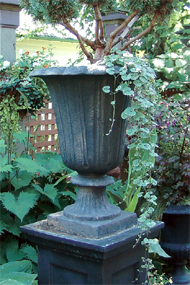
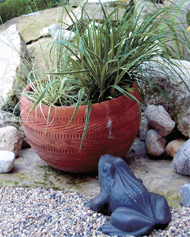

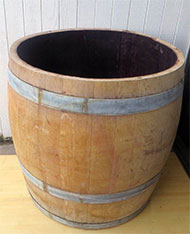
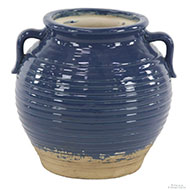
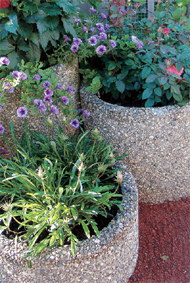


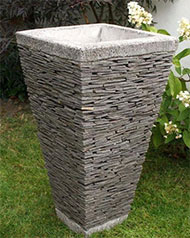
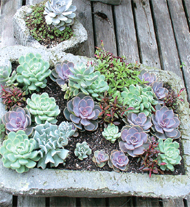
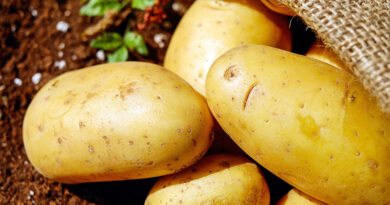
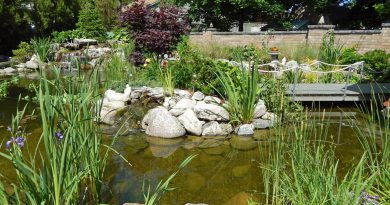
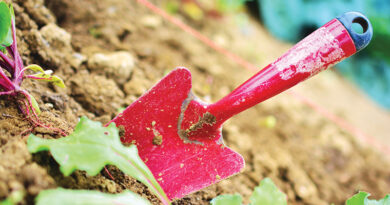
Pingback: Gardening Magazines Canada – House Design